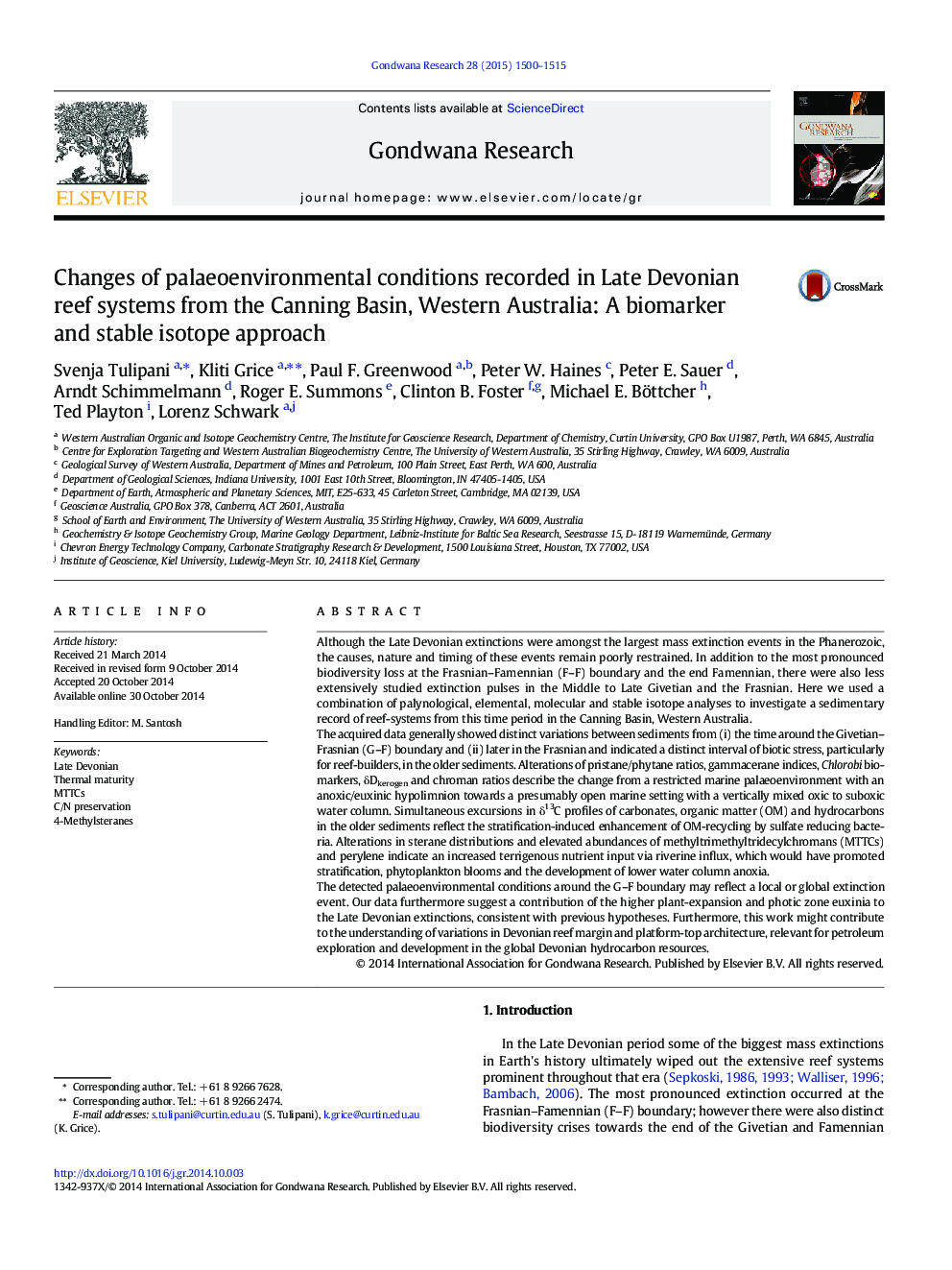| کد مقاله | کد نشریه | سال انتشار | مقاله انگلیسی | نسخه تمام متن |
|---|---|---|---|---|
| 4726704 | 1356343 | 2015 | 16 صفحه PDF | دانلود رایگان |
• Investigation of a sediment-core from Late Devonian reef systems, Canning Basin, WA
• Integrated study with biomarker, elemental, palynological & stable isotope data
• Distinct period of biotic stress especially for reef-systems close to G–F boundary
• Link of Late Devonian extinctions to photic zone euxinia and rise of higher plants?
• Exceptional organic matter preservation in the Gogo Formation (basin facies)
Although the Late Devonian extinctions were amongst the largest mass extinction events in the Phanerozoic, the causes, nature and timing of these events remain poorly restrained. In addition to the most pronounced biodiversity loss at the Frasnian–Famennian (F–F) boundary and the end Famennian, there were also less extensively studied extinction pulses in the Middle to Late Givetian and the Frasnian. Here we used a combination of palynological, elemental, molecular and stable isotope analyses to investigate a sedimentary record of reef-systems from this time period in the Canning Basin, Western Australia.The acquired data generally showed distinct variations between sediments from (i) the time around the Givetian–Frasnian (G–F) boundary and (ii) later in the Frasnian and indicated a distinct interval of biotic stress, particularly for reef-builders, in the older sediments. Alterations of pristane/phytane ratios, gammacerane indices, Chlorobi biomarkers, δDkerogen and chroman ratios describe the change from a restricted marine palaeoenvironment with an anoxic/euxinic hypolimnion towards a presumably open marine setting with a vertically mixed oxic to suboxic water column. Simultaneous excursions in δ13C profiles of carbonates, organic matter (OM) and hydrocarbons in the older sediments reflect the stratification-induced enhancement of OM-recycling by sulfate reducing bacteria. Alterations in sterane distributions and elevated abundances of methyltrimethyltridecylchromans (MTTCs) and perylene indicate an increased terrigenous nutrient input via riverine influx, which would have promoted stratification, phytoplankton blooms and the development of lower water column anoxia.The detected palaeoenvironmental conditions around the G–F boundary may reflect a local or global extinction event. Our data furthermore suggest a contribution of the higher plant-expansion and photic zone euxinia to the Late Devonian extinctions, consistent with previous hypotheses. Furthermore, this work might contribute to the understanding of variations in Devonian reef margin and platform-top architecture, relevant for petroleum exploration and development in the global Devonian hydrocarbon resources.
Figure optionsDownload as PowerPoint slide
Journal: Gondwana Research - Volume 28, Issue 4, December 2015, Pages 1500–1515
